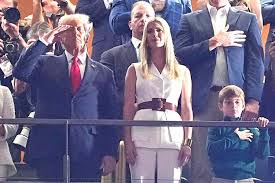Super Bowl fans are split after a fleeting camera shot caught Donald Trump during the national anthem.
These divergent interpretations highlight a key challenge in understanding live events: the same moment can be experienced in dramatically different ways by different people. In a stadium filled with tens of thousands of fans—each with their own political beliefs, personal histories, and cultural values—the reaction to a single image can vary widely. For President Trump, whose political career has been as polarizing as it is high-profile, this was perhaps inevitable.
V. The Broader Context: Politics, Patriotism, and the Super Bowl
To fully appreciate the significance of the moment, one must consider the broader cultural and political context. The Super Bowl is no longer just a sports event; it has evolved into a multifaceted spectacle where art, entertainment, and politics intersect. For many Americans, the game is an annual ritual—a time when the nation comes together to celebrate not only athletic excellence but also the values that define the American experience.
President Trump’s attendance at Super Bowl LIX, as the first sitting president to be present at the event, is a landmark moment that carries deep symbolic weight. For his supporters, his presence is seen as a bold statement of leadership—a reaffirmation of the values of hard work, patriotism, and the American Dream. In his official statement, Trump expressed genuine enthusiasm for joining fans in New Orleans and celebrated the spirit of unity that football fosters. “I look forward to joining the fans in New Orleans for Super Bowl LIX to cheer on two great teams—the Kansas City Chiefs and the Philadelphia Eagles,” he declared. His remarks underscored the idea that football is more than just a game; it is a unifying force that brings together people from all walks of life.
